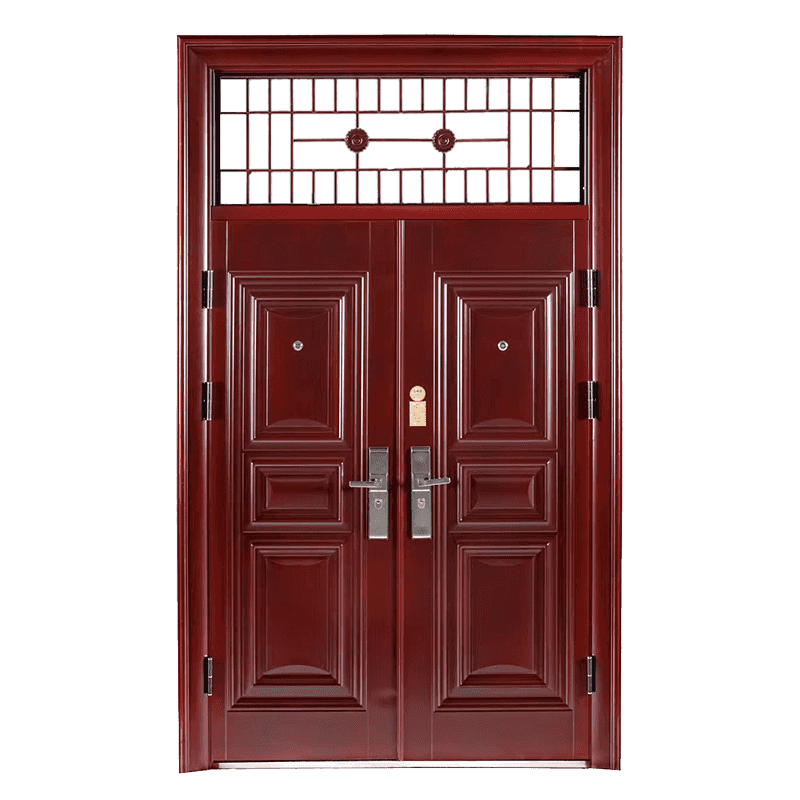The Fire Resistance Capabilities of Steel Core Doors
Sep 25, 2024
Wholesale Custom Steel Reinforced Core Door Maker in China
In the realm of building safety, the role of doors extends beyond mere access control to encompass critical functions such as fire prevention and containment. The steel core door, a product of modern engineering, has been designed to meet these stringent requirements, offering a level of protection that traditional doors often cannot match. This article will explore the fire-resistant properties of steel core doors, examining their construction, performance in fire scenarios, and the reasons why they are becoming increasingly popular in both residential and commercial settings.
The steel core door, as the name suggests, is a door that features a steel core, often sandwiched between layers of other materials such as wood or fiberglass. This core is not only the backbone of the door's strength but also the key to its fire-resistant capabilities. Steel is an inorganic material that does not burn, making it an ideal choice for doors that must withstand the intense heat of a fire. The steel core door's ability to resist fire is not just a matter of the material itself but also the way it is constructed and the additional features that are incorporated into its design.
One of the primary advantages of steel core doors in terms of fire resistance is their ability to maintain structural integrity at high temperatures. Unlike wood, which can char and lose its strength rapidly when exposed to fire, steel retains its shape and strength even when subjected to heat. This means that a steel core door can continue to function as a barrier, preventing the spread of fire and smoke to other areas of a building.
Moreover, the steel core door's fire-resistant properties are often enhanced by the inclusion of specialized materials and technologies. For instance, some steel core doors are filled with intumescent materials, which expand when exposed to heat, creating a charred barrier that seals off the door and prevents the passage of flames and smoke. This added layer of protection can significantly increase the door's fire rating, making it a crucial component in a building's fire safety strategy.
The fire resistance of steel core doors is also supported by their ability to withstand the thermal shock that can occur during a fire. The rapid temperature changes that occur in a fire can cause materials to expand and contract, causing structural failure. However, steel's high thermal conductivity and low thermal expansion coefficient make it less susceptible to these effects, ensuring that the door remains stable and secure.
In addition to their inherent fire-resistant properties, steel core doors can also be designed to meet specific fire safety standards and regulations. These standards, which vary by region and building type, often require doors to have a certain fire rating, indicating how long they can withstand a fire before failing. Steel core doors can be manufactured to meet these ratings, providing a level of protection that is both quantifiable and reliable.
The installation of steel core doors also plays a role in their fire-resistant performance. Proper installation, including the use of fire-resistant seals and hardware, can help to ensure that the door functions as intended in the event of a fire. This attention to detail is crucial, as even a fire-resistant door can be compromised if it is not installed correctly.
In conclusion, the steel core door's fire resistance is a testament to the ingenuity of modern engineering and the importance of safety in building design. With their ability to maintain structural integrity, withstand thermal shock, and meet stringent fire safety standards, steel core doors offer a level of protection that is unmatched by traditional doors. As awareness of fire safety continues to grow, the use of steel core doors will likely become even more widespread, providing a vital line of defense against the devastating effects of fire.

 English
English 中文简体
中文简体 Français
Français Español
Español عربى
عربى





